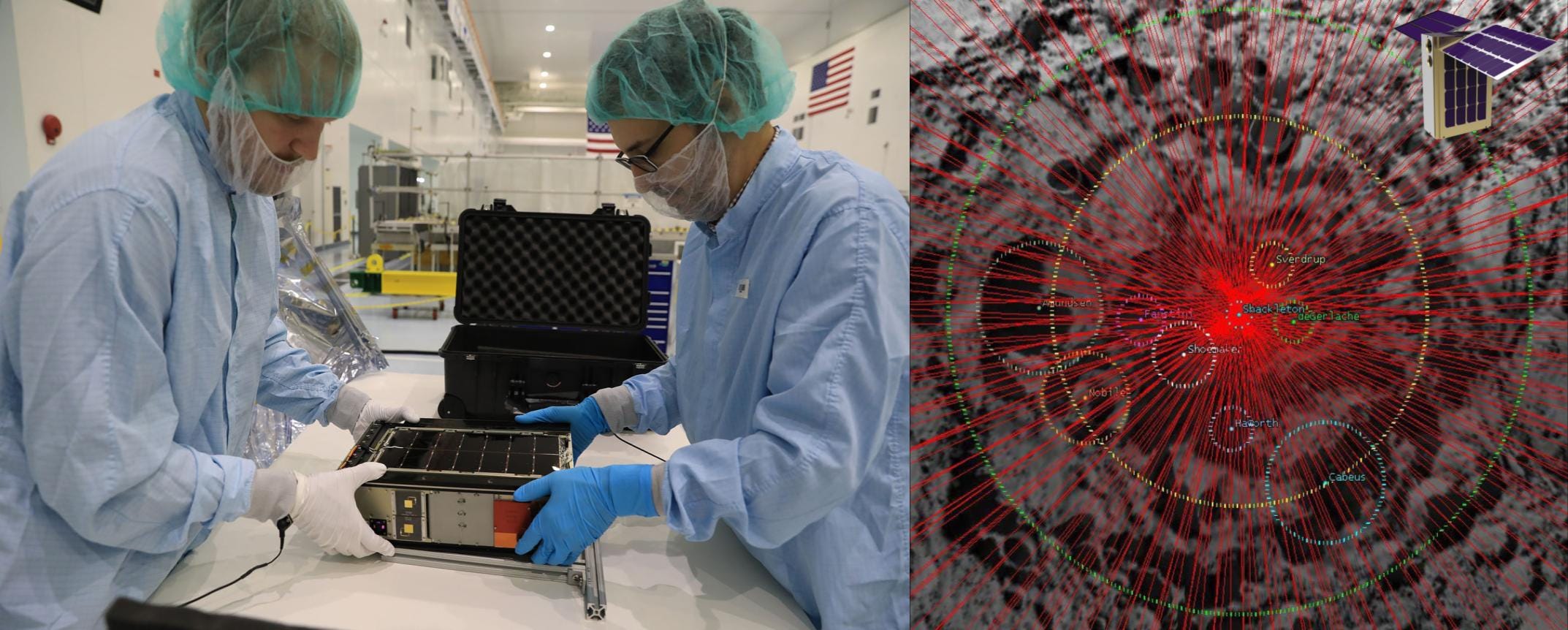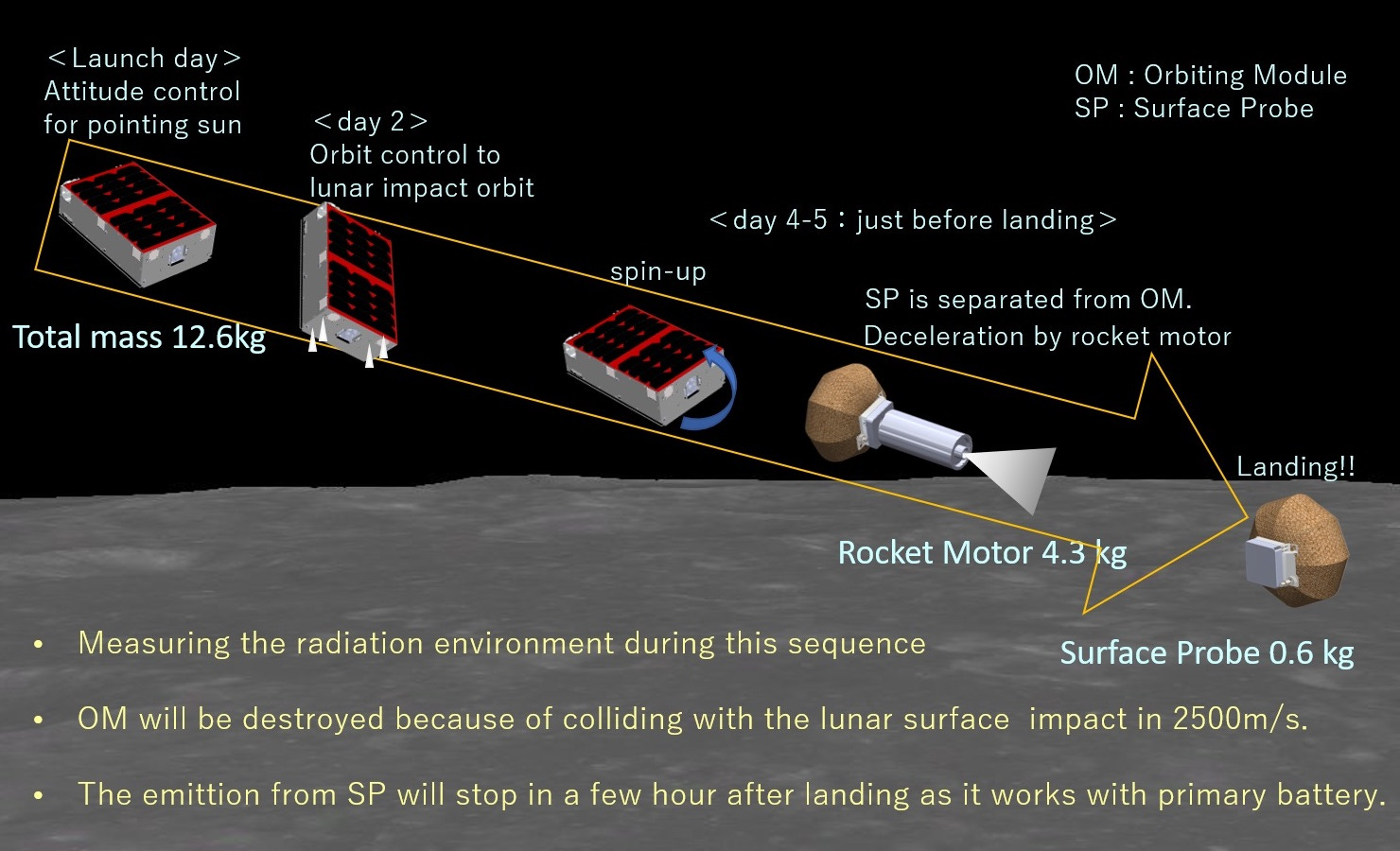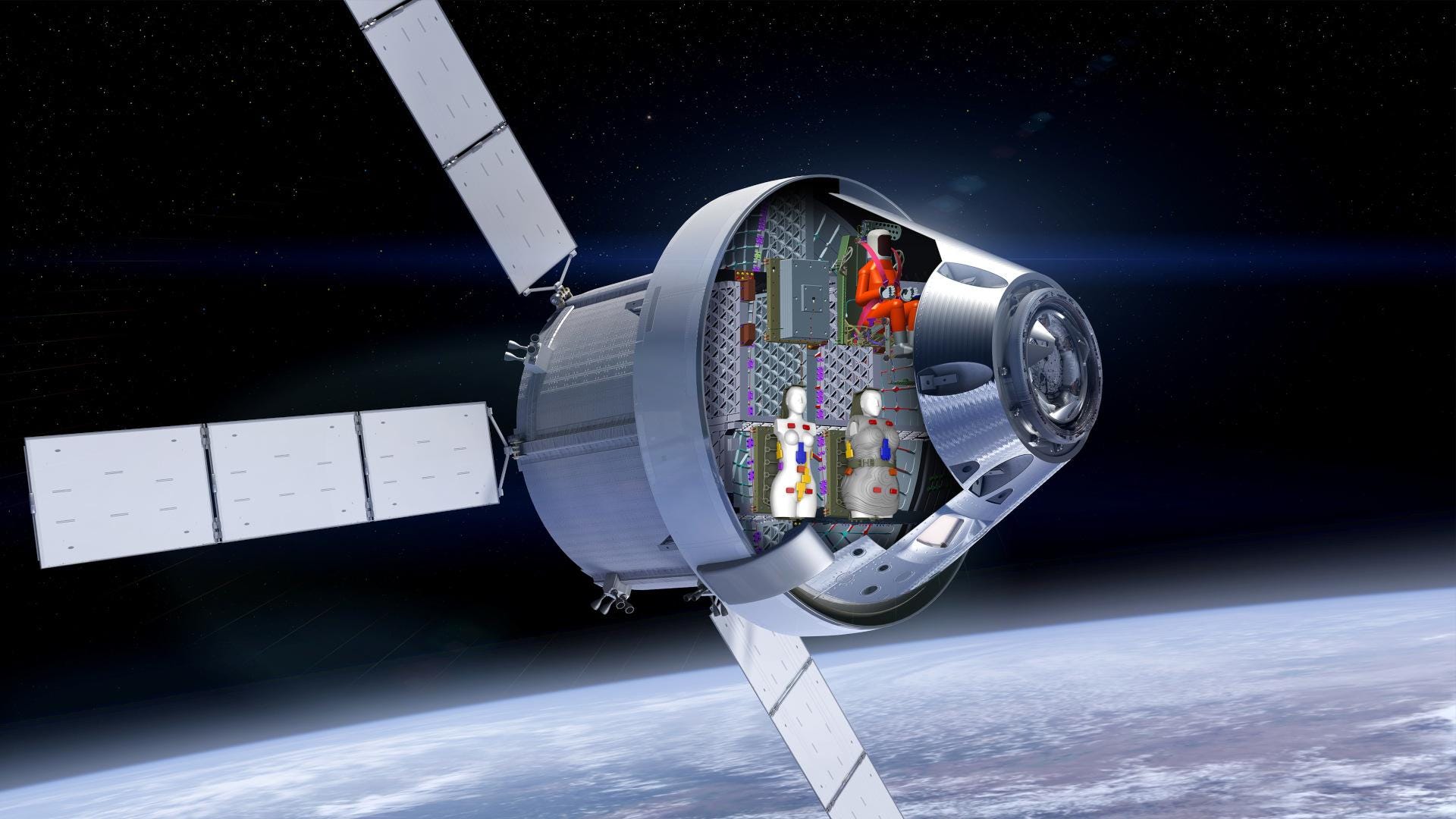NASA’s Artemis I is loaded with sidekick science and technology missions
January 2023 Edit: I’ve covered post-launch updates on the CubeSats on Moon Monday #104, #105, and #108.
NASA is all set to launch the SLS rocket on August 29, setting in motion the historic Artemis I mission to send an uncrewed Orion spacecraft around the Moon and back. While Artemis I’s primary objective is to test a key technology stack NASA will use for ferrying future lunar astronauts, the mission also sports well over a dozen uniquely exciting secondary experiments.
After the SLS rocket launches, the second stage will fire its engine to push the connected Orion spacecraft out of Earth orbit and on a trajectory to the Moon. It’ll then separate from Orion, and subsequently deploy 10 CubeSats weighing about 14 kilograms each on independent scientific missions. Orion itself carries several experiments of its own. All of these secondary experiments can be broadly divided into three categories:
- Lunar missions
- Technology demonstrations
- Radiation experiments

Lunar missions
There are four secondary lunar missions launching on Artemis I.
The LunaH-Map CubeSat lunar orbiter will use two neutron spectrometers to map hydrogen—an indicator of water—across the Moon’s south pole. Over 60 Earth days, it will map hydrogen in permanently shadowed regions, the variably lit south polar surface, and a meter below both in the highest resolution to date by flying at an altitude of merely 12 kilometers or lower.
On the other hand, the Lunar IceCube CubeSat lunar orbiter will use its miniaturized infrared spectrometer to directly detect water across the Moon’s surface as well as measure water vapor in the thin lunar exosphere.
Both of these missions represent the start of a series of agency-funded robotic missions over the next five years, each of which will take specific measurements to help scientists get an actionable grasp on the nature of water on the Moon.

The Lunar InfraRed imaging (LunIR) CubeSat, a joint mission by Terran Orbital and Lockheed Martin, will fly past the Moon to test a novel micro-cryocooler and thermal imager combo designed to make infrared surface maps under difficult conditions. This could lead to better night-time mineral- and water-mapping of the Moon by future missions.
The last secondary lunar mission on Artemis I is the most fascinating one. The Japanese space agency JAXA’s OMOTENASHI aims to demonstrate a semi-soft landing with a 14-kilogram spacecraft! That itself is its primary objective; to test unique technologies and trajectory maneuvers that can safely land small spacecraft on the Moon. If successful, OMOTENASHI will be the smallest spacecraft ever to touchdown on the lunar surface, and make Japan the fourth nation to achieve the feat.

Technology demonstrations
Artemis I carries five secondary technology demonstration missions, each of which are totally different from the other.
The NEA Scout will be the first CubeSat to visit an asteroid, using a solar sail no less. When at the Moon, NEA Scout will deploy its large 86-square-meter solar sail to slowly spiral out of lunar orbit and eventually glide past a near-Earth asteroid to image it up-close.
The Italy-provided ArgoMoon CubeSat is on a photography mission. After separating from the SLS rocket’s second stage, it will take what are sure to be awe-inspiring images of the second stage pushing Orion out of Earth orbit and onward to the Moon. ArgoMoon will also help monitor the deployment of the other CubeSats, and test optical communications between it and Earth.
The Team Miles CubeSat is a citizen science project chosen as part of NASA’s Cube Quest Challenge. It aims to autonomously travel at least 96 million kilometers in deep space using plasma propulsion, as a precursor for future larger, efficient spacecraft.

Via Lockheed Martin, Amazon’s Alexa voice assistant and Cisco’s Webex video conferencing software will be inside Orion in the form of a tailor-made tablet and associated hardware. Collectively called Callisto, the system will use NASA’s Deep Space Network for Webex’s video conferencing and Orion’s local database for Alexa to function offline. Since Artemis I has no crew, operators will interact with Callisto remotely from the control center on Earth. Specifically with Alexa, the idea is that crew interacting with it should be able to access specific real-time mission telemetry using voice alone. Based on this demonstration flight, Callisto will be improved for Artemis II, the first crewed flight under the Artemis campaign.
Studying deep space radiation like never before
The Artemis I mission will study deep space solar and galactic cosmic radiation in a plethora of ways. Most notably, NASA has installed two dummies inside the Orion spacecraft, provided by the German space agency led MARE experiment. These anatomically accurate analogues of adult female torsos will measure the effects of deep space radiation on the female body for the first time. Because women have a higher cancer risk than men on average, MARE will help develop adequate protective measures for future female crews on Moon missions.
One of the dummies, named Helga, will fly unprotected while the other, Zohar, will wear a Israel-provided radiation protection vest called AstroRad. Combined, both torsos have more than 10,000 passive crystal sensors and 34 active radiation detectors embedded inside them to measure radiation exposure throughout the mission, all the way until Orion splashes down on Earth. NASA and its partners will compare datasets from Helga and Zohar to best protect astronauts on Artemis II.

The many more radiation experiments on Artemis I include five ESA-provided active dosimeters, four NASA-funded biological investigations, tree seeds inside Orion (similar to Apollo’s Moon Trees), and Japan’s miniature active dosimeter on the OMOTENASHI semi-soft lander.
There’s also an active radiation warning system within Orion called HERA, which will notify crew to take shelter on detecting highly energetic solar flare events. From August 4 through 7 in 1972, the Sun blurted several bursts of flares between the Apollo 16 and 17 missions. Had the astronauts been in lunar orbit or on the surface, they could’ve faced damaging levels of radiation. So one nice thing about Orion is that it’s designed to protect astronauts from such energetic particles that reach the Earth-Moon space in a matter of hours.
Further, while Orion’s Artemis I flight will last 42 days at best, three Artemis I CubeSats will collect deep space radiation data for much longer.
BioSentinel will measure the impact of space radiation on yeast over six months from solar orbit. The researchers chose yeast because their cells and human cells have many similar DNA damage and repair mechanisms. Terrestrial facilities can’t fully simulate the unique radiation environment of deep space so this study will provide us new insights on its effects on biological life as NASA seeks to establish long-term human presence on the Moon. As part of their CLPS program to send science payloads to the Moon on commercial landers, NASA selected a similar surface mission for launch in 2026.
The Artemis I CubeSat EQUULEUS by Japan will fly to the Earth-Moon Lagrangian Point L2—where the Earth’s and Moon’s gravitational pulls roughly balance—to study phenomena and changes in Earth’s plasmasphere due to the solar wind, the radiation particles and magnetic fields streaming from the Sun. It will also measure meteor impact flashes and the dust environment around the Moon, providing additional insights on how we can best protect future astronauts.
The CuSP CubeSat will study the solar wind from a solar orbit closer in than Earth’s. This is a test mission to eventually vouch for a network of dozens of small solar observing stations across the inner solar system that can track and help better predict solar weather in 3D, giving us a better understanding of our Sun and its threats to future human exploration.
Looking ahead, an armada of international instruments on the upcoming NASA-led international Gateway lunar station will continue and advance for years this radiation-characterizing research kicked off by Artemis I. NASA and ESA will use these comprehensive datasets to best protect astronauts on longer and sustained future crewed missions to the Moon, Mars and beyond.
→ Browse the Blog | About | Donate ♡
